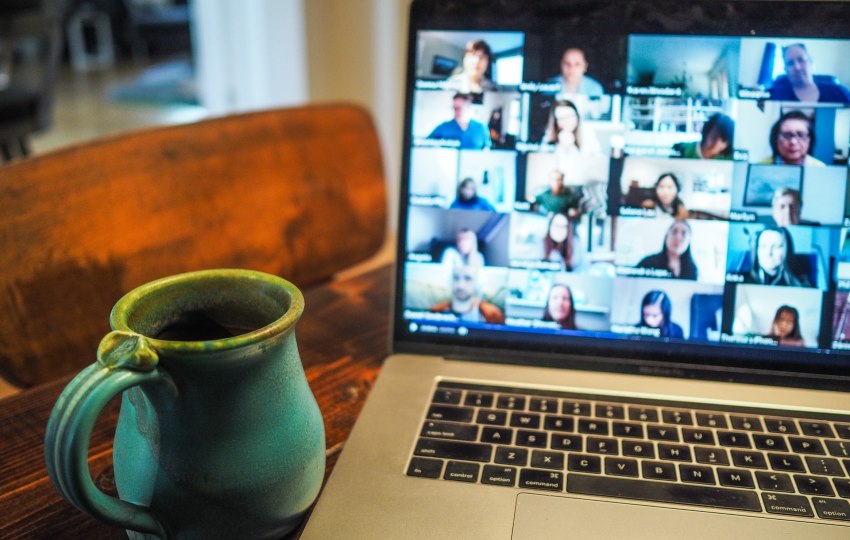In the almost two years that the COVID-19 pandemic has been raging on, it has triggered tremendous changes at the workplace. But of course, if all employees are affected in one way or another by COVID-19, what is the situation for people with disabilities?
The employment rates for people with disabilities were significantly lower than the rest of the population even before the pandemic hit. According to research, the disability employment gap has widened even more during that time, at least in some parts of the world.
Despite the early negative evidence about disability and COVID-19 in the workplace, the future may not be so negative after all. Let’s dive into some more details about employment during COVID-19 for people with disabilities and see for ourselves what the future may hold.
The vulnerability of people with disabilities

To begin with, people with disabilities are generally more vulnerable to any changes in the economic environment. For example, disabled persons were one of those groups of people who were more affected by the previous recession back in 2008 and lost their jobs.
Since then, there has been a steady recovery with European or national initiatives helping the employment of people with disabilities. But the gap between disabled and non-disabled people remained significant, which is even worse in youth.
But even if people with disabilities can find a job, this does not mean that inequality stops. According to statistics, disabled persons earn 12% less than other employees and are more likely to work part-time or in low-skill jobs.
Their employment and financial disadvantage put them at an increased risk of poverty and social exclusion. With more healthcare needs, the health and wellbeing of disabled persons are extremely fragile.
The negative impact of COVID-19 on persons with disabilities
In employment
Pretty much the same recession as above happened during the COVID-19 pandemic. The imposed regional or international lockdowns, the closure of businesses, and the decreased demand for goods and services led to record-breaking GDP losses worldwide and subsequently to layoffs as companies became unsustainable.
As a result, according to Cedefop, “almost 7 million EU jobs will be lost or not created due to the coronavirus pandemic over the period 2019-2022”. Unfortunately, many of those jobs belonged to people with disabilities.
In Health & wellbeing
COVID-19 did not only have severe consequences to the employment of people with disabilities, but they were those hit the most. Disabled persons belong to the most vulnerable groups to catch the virus, while the majority of COVID-19 related deaths were of people having some form of disability (including the elderly).
The fact that disabled workers were over-represented in low-skilled and low-paid jobs deemed non-essential led to their suspension. At the same time, people with disabilities are more vulnerable in such environments as unemployment has severe effects on their health and wellbeing, eventually leading to lower job security. That is mainly due to high unemployment rates or reduced working hours.
But one thing is sure. Society will feel the adverse effects of COVID-19 on the mental health and employment of people with disabilities for years to come.
Nevertheless, the pandemic also brought some positive changes that could eventually benefit people with disabilities.
Can flexible work from home models level the playing field?

The demand for flexible working models
In previous years, employers were reluctant to allow flexible working for their employees despite employees’ demands. The grounds on which employers refused to allow flexible working like work from home were mainly about supposedly lower productivity, lack of trust, or unavailability of relevant technology.
As soon as the pandemic hit and employers had to choose between either shutting down their businesses or allowing their workers to work from home, they, of course, selected the latter. For many employees, this was great news. For many, it meant no commute and therefore fewer expenses, or a better work-life balance, especially for new parents with positive results in their wellbeing.
But most importantly, allowing flexible working at the workplace could potentially balance out the negative consequences of COVID-19 to people with disabilities. Homework was one of the demands of disabled persons for years, and employers always denied it. Fortunately, the new norm of this pandemic made this demand sound reasonable as opposed to the past.
How the pandemic can potentially benefit people with disabilities
The reason people with disabilities were always asking for homework was to avoid uncomfortable situations. From the first moment disabled persons go out their door to go to their job, they deal with all kinds of problems. Daily commuting from their home to the workplace is almost impossible as there are many obstacles. From pavements without mobility ramps to getting a taxi or riding the metro, travelling as a person with disabilities needs special arrangements.
But the same also happens at the workplace. An office needs to have such modifications that allow the easier movement of people with disabilities and them being autonomous. The requirement of having such arrangements to accommodate people with disabilities were one primary reason that they could not find work easily.
Hopefully, if remote working continues still to be a thing after the end of this pandemic, that will mean better employment opportunities for disabled persons and youth.
The wider benefit of technology applications in youth unemployment

High youth unemployment was a thing even before the pandemic. For that reason, the EU heavily focuses on NEETs to help them increase their employability. Disabled youth largely fall into this category as their difficulties start from formal or non-formal education.
Businesses, schools, and universities have invested in technology equipment resources that allow work from home or distant learning. This technology has the potential to transform the situation for a lot of our disabled fellow citizens. Disabled persons can now have easier access to school and attending university, meaning that the skills gap will narrow further in the years ahead.
Conclusion
The COVID-19 pandemic has had a tremendous impact on the work of all employees, but most importantly, on people with disabilities. Disabled persons are those affected the most by this pandemic in terms of jobs losses and health problems.
As we are yet to leave this negative situation behind, many changes could potentially benefit disabled persons more in the future. Flexible working arrangements like work from home and the integration of communication technologies create an environment more suitable for people with special needs even from a younger age.
Therefore, the toll of COVID-19 on people with disabilities was heavy, but it remains to be seen if its legacy of flexible working and studying will create a better future for them.
Have a look at In Touch Erasmus+ project
The In Touch project, that iED participates as a project partner, wants to bridge the opportunities gap that exists for people with disabilities. The project focuses on young people with disabilities to provide them with the necessary entrepreneurial skills to start their ventures. This project contributes to the essential learning opportunities that persons with disabilities lack and helps them become self-employed and autonomous. That way, they will avoid the social stigma and prejudice that many workplaces are full of.
Are you interested in impacting employment and disability in the EU in the coming decade? iED is an experienced partner in social inclusion European projects that will add value to your project consortium.
If you are looking for an experienced EU project partner and leader to join your EU project on disabilities, be our partner for a winning consortium.

